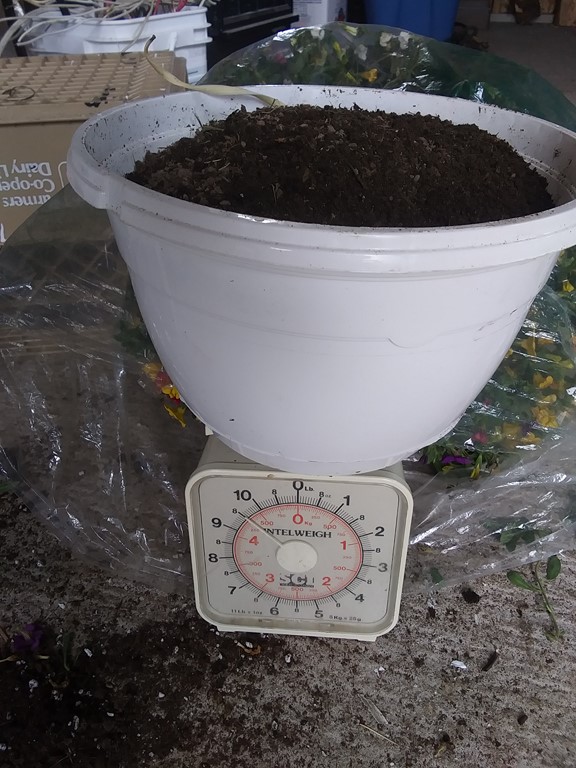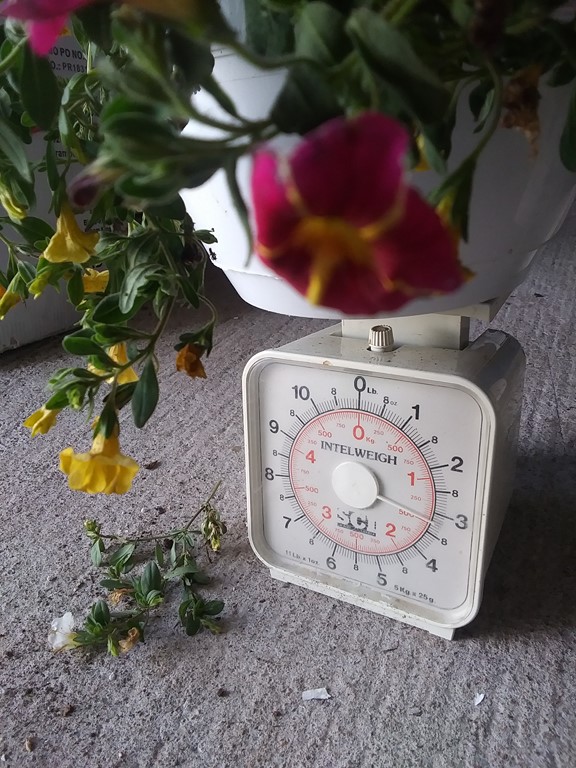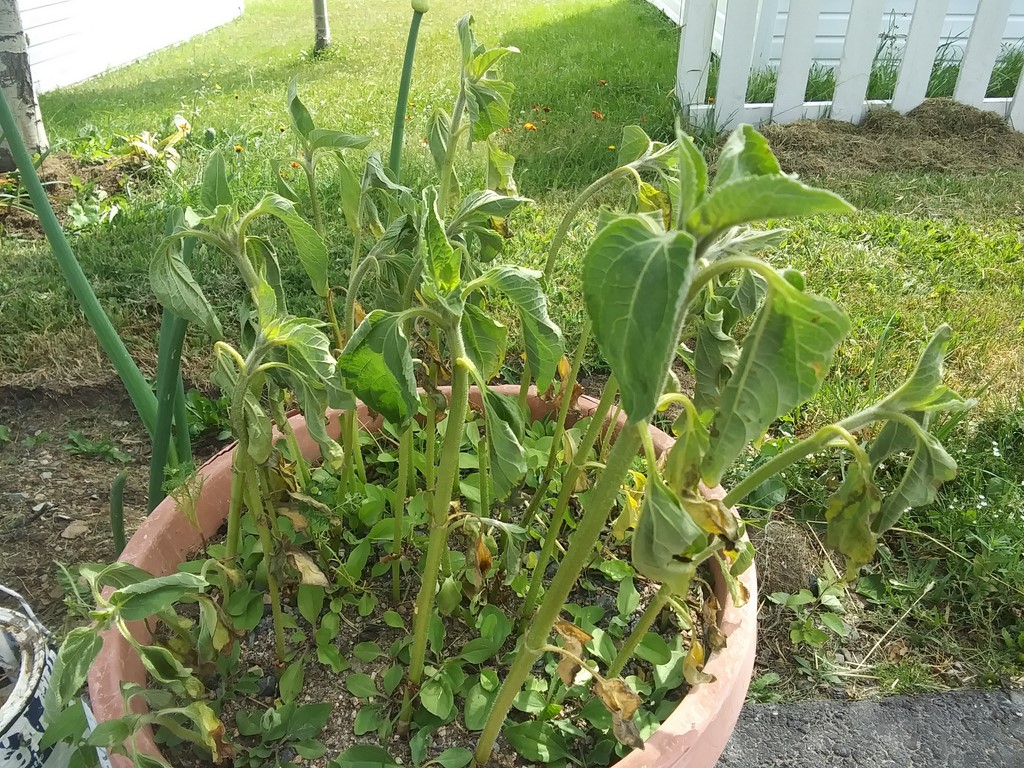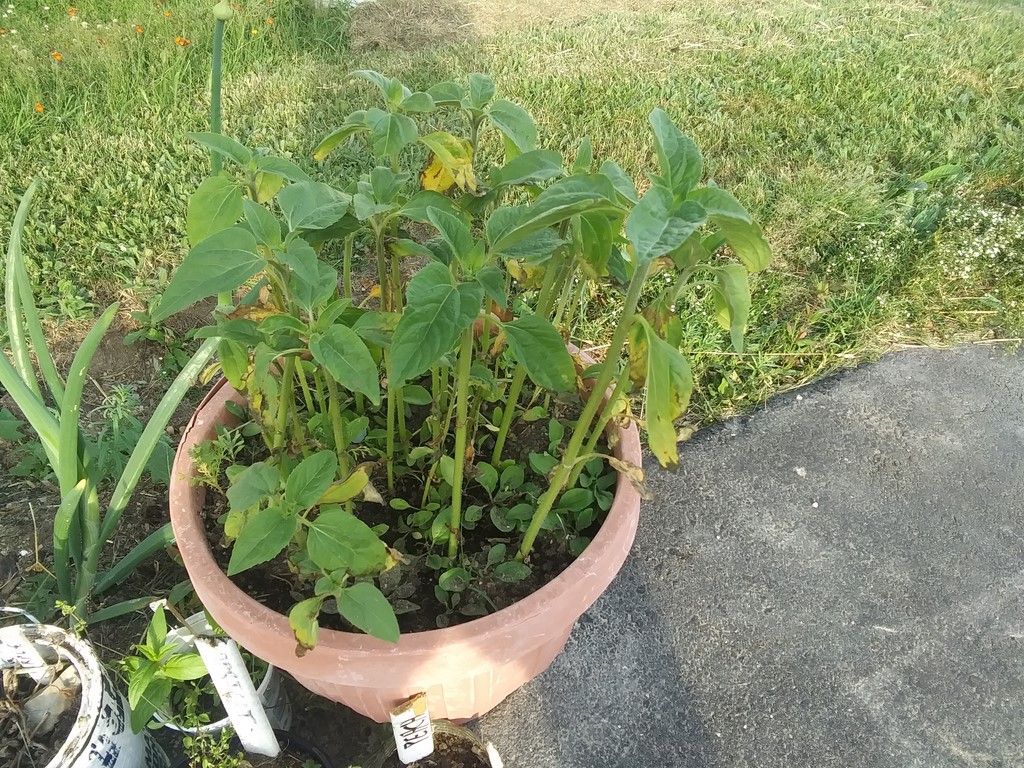709-218-7927 The Landfall Garden House 60 Canon Bayley Road Bonavista, Newfoundland CANADA A0C 1B0 |
|---|
Watering Plants
... especially house-plants.
Most of us tend to over-water plants.
Another way of saying this is that we tend to drown our plants. Just as we would drown if our environment were 100% water. We call that drowning. Plant soil needs air, and if the soil is water-logged, there is practically no air in the soil.
A plant, like a mammal, when you think about it, is essentially a water-pump made of water.
Humans are about 70% water, and the food we consume is anywhere between 70% and 95% water, and our excretory “ash” is about 70% water; our urine more so.
A plant has a higher proportion of water in is fabric.
A water-pump made from water is a curious device, and needs special attention.

Here is a typical house-plant pot filled with garden soil. It weighs about 9˝ pounds.

Here is a houseplant and its matrix taken from the pot. Weighs in at 3 pounds. Over six pounds difference. Why?
When you examine your store-bought house-plant, it is forced/grown in a lightweight medium that is essentially fibre with nutrients. Such a plant will need frequent drinks of water, but in small volumes.
Such a plant can drown if presented with, say, two litres of water per day. Of course, conditions vary the requirement, see below.

This photo was taken around 1030 in the morning. Note the wilted leaves. The plants are in a tub of soil, not house-plant matrix.

This photo was taken at 1900 the same day, about eight hours later.
I had added a couple of litres of water at 1030 when I noticed the wilted leaves.
Wilted (or wilting) leaves are a distress sign; the plant is “telling you” that it needs a drink of water, and the plant perks up once it gets that drink.
Rather like a youngster saying “I’m thirsty”.
Forcing a bottle (or more) of water on a youngster on the hour every hour will over-water the infant; we are talking wet-pants, frequent pit-stops, and a generally obstreperous child here.
Observing the leaves of a plant – in the garden or in a pot – is the best way to learn when the plant needs water.
Conditions
A hanging plant in direct sunlight will need watering more frequently than a hanging plant in doors.
A hanging plant in a breezeway, or outside on the street, will need watering more frequently than a hanging plant in doors.
A useful procedure is to keep a hanging plant indoors for a week and observe its watering requirement. Give it a small drink when it is thirsty, not before.
After a week indoors, hang it outside in a sheltered area for a week, and observe its watering requirement. Give it a small drink when it is thirsty, not before.
After a week in a sheltered area, move it to its proper place (perhaps direct sunlight, perhaps in a breezeway) and observe its watering requirement. Give it a small drink when it is thirsty, not before.
Links
Signs your plants are struggling — and how to save them
709-218-7927 CPRGreaves@gmail.com Bonavista, Thursday, September 26, 2024 1:24 PM Copyright © 1990-2024 Chris Greaves. All Rights Reserved. |
|---|